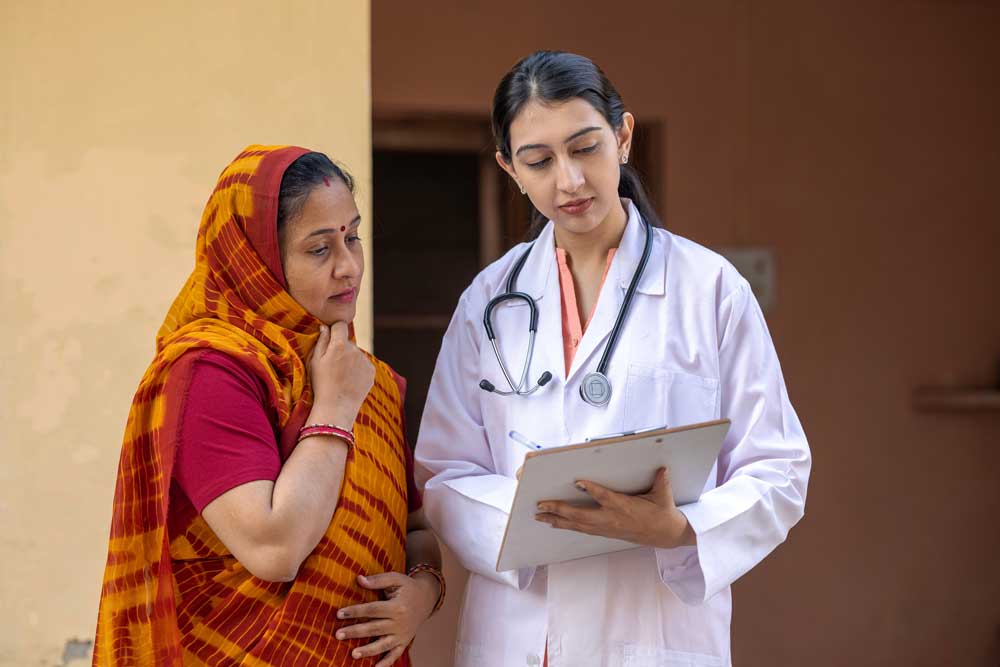The National Health Authority’s latest reporting shows a milestone. Women now make up roughly 49 per cent of hospital admissions under Ayushman Bharat-Pradhan Mantri Jan Arogya Yojana (AB-PMJAY). They are almost half of all beneficiaries, which is a positive signal for access to institutional care. But what does it mean in practice? Let us unpack the numbers, the on-the-ground realities, and practical solutions.
Why The 49 Per Cent Figure Matters
Two things make the 49 per cent headline important. First, it signals that half of the scheme’s hospital admissions are for women. This is a major step toward gender-balanced utilisation in a country where women historically underuse formal healthcare. Second, it reflects that outreach such as cards issued, digital integration, and enrollment drives is beginning to reach women. The NHA and recent reporting also note the massive scale-up of Ayushman cards, with tens of crores issued.
But this number alone doesn’t mean everything is solved. There are still persistent gender gaps in the types of services used, care, and timely access. For example, an analysis of public health insurance programmes found that women historically accounted for fewer hospital visits than expected, given disease prevalence, especially for specialties like cardiology, oncology and nephrology.
How To Check Eligibility And Claim
1. Online: Visit the official PM-JAY/NHA beneficiary portal and use the ‘Am I Eligible / Find My Family’ feature. You can search by mobile number or by name and state. The NHA beneficiary portal also lets existing members log in to view member IDs and family coverage. For verification, the official PM-JAY pages explain eligibility rules and the list of covered socio-economic groups.
2. Common Service Centres (CSCs) or health workers: If you don’t have internet access, visit your nearest CSC, health sub-centre, or ask an ASHA/Anganwadi worker to check your status. Many states actively use frontline workers to enrol women and issue Ayushman cards.
3. How to claim: At any empanelled hospital, whether government or private, present your Ayushman card or family ID. The scheme is designed to be cashless and paperless for the beneficiary. The hospital verifies your status through the NHA system and claims are settled between the provider and NHA/state implementing agency. If you have an ABHA (Ayushman Bharat Health Account) or a generated Ayushman card, that speeds verification. Always keep a copy of the hospital case sheet and the discharge summary.

Barriers
Despite the encouraging 49 per cent headline, evidence and field reports point to remaining blind spots. Many poor and rural women still don’t know the scheme covers them, or confuse state schemes with PM-JAY. Women often need permission or money for transport and may deprioritise their own health relative to other family members. They may access maternal care more easily but face barriers for chronic disease care, diagnostics or specialised surgeries. Delays in hospital reimbursements and periodic withdrawal of private hospitals from the scheme can reduce access points. Not all states have identical implementation models and local administrative differences can create confusion.
Benefits Of Insurance For Women
• Individual Benefits: Reduced out-of-pocket spending, earlier care seeking, and lower health expenditure for families where women are primary caregivers.
• Public Health: Better detection and management of health issues, non-communicable diseases and cancers.
• Economic Changes: Healthier women can work more reliably and participate in the economy.
• Data And Planning: When uptake among women increases, policymakers can design targeted packages based on real utilisation data.
Solutions
1. Mobile and ABHA integration: Making ABHA IDs and digital verification simple reduces paperwork friction and makes cashless care faster. This is important for women who have limited documents.
2. Transport and accompaniment support: Dedicated transport or tie-ups with community vans can remove a logistical barrier for women seeking hospital care.
3. Priority empanelment and female-friendly services: Encourage empanelment of hospitals in underserved areas, with female-sensitive OPD hours, privacy and counselling services so that women are willing to seek care.
4. Grievance redressal and timely provider payments: Ensuring hospitals are paid promptly reduces service suspensions and maintains network density. Strengthening helplines and community grievance cells helps women get care.
The 49 per cent figure shows that Ayushman Bharat is increasingly reaching women, but it’s not the finish line.